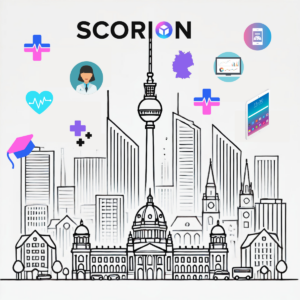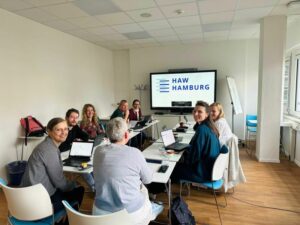What are EPAs and how do you assess them?
EPAs are increasingly being used in medical education worldwide. Prof Dr Olle ten Cate of Utrecht University and the UMC Utrecht, is the founder of this groundbreaking body of thought in medical education. Initially, EPAs were developed by him for continuing medical education. But we are also increasingly seeing EPAs popping up in other courses in the health sector and even already beyond. But what are they really. Is it some kind of panacea in training land? A method that has finally found a solution for reliably assessing the competence of medical specialists?

What are EPAs?
EPAs (Entrustable Professional Activities) could essentially be thought of as a basic activity in a profession. And for a training course, a set of EPAs is often developed on the basis of which it can be assessed whether someone is a competent professional or not. For example, there is currently a national project in the Netherlands, CZO-flex level, in which EPAs are being developed for continuing education in healthcare. A number of more general EPAs are being developed for each profession, as well as specific EPAs for specialisations in the field.
What is important in developing EPAs is that they describe the core of a discipline or profession and thus provide a good handle for people in training, but also for assessors. The scope of an EPA can vary. In medicine courses, 5 basic EPAs are used, which in turn are broken down into sub-EPAs. For dental studies in the Netherlands, Radboud University in Nijmegen has developed a set of 14 EPAs that cover the entire study programme.
Besides EPAs, competences (in the medical professions, the CanMEDS from the Canadian Medical Education Directions for Specialists) are often used in training courses. EPAs are often integral professional activities and competences are more about the ‘soft-skills’ such as communication or collaboration. These CanMEDS are often incorporated into EPAs.
It is often perceived as quite difficult to determine when a student is competent on a particular activity. And this competence is important to be able to trust that you can entrust the student with a patient independently. The concept of ‘entrustable professional activities’ aims to establish that a student is sufficiently competent despite complex and diverse situations.
How do you assess EPAs?
And to assess this properly, Prof Dr Ten Cate has developed a toolkit that actually consists of two parts. The first are the different levels of supervision which are a very useful tool to get a good idea of the level at which someone is performing.
|
supervision levels |
|
|
1 |
The student may observe but not perform the EPA. |
|
2 |
The student may perform the EPA under direct supervision, with the supervisor physically present in the same room. |
|
3 |
The student may perform the EPA under indirect supervision, where supervisor is not physically present but is readily available when needed. |
|
4 |
The student performs an activity entirely independently. |
|
5 |
The student supervises other students in earlier years. |
The second is a palette of assessment tools used. This is because it depends on the activity which assessment tool is appropriate. For example, one activity may be better assessed by ‘direct observation’ and another by a more longitudinal methodology of multiple measurements or a case discussion. It is therefore important to use the right measurement tools.
Working with EPAs
Developing EPAs is still an art. There are a number of tips and roadmaps for this too (Ten Cate, 2015; Pool & Ten Cate 2018). The steps to take are: Identify EPAs, describe them, validate and develop assessment instruments.
And applying EPAs in practice means that, as an educational institution or medical university or hospital, you ensure that prospective professionals work a lot in practice with or without supervision. Learning in the workplace, in other words.
But in addition, it is also important that these learning activities are recorded in some way, so that you can see what the progress is or to link an ‘entrustment descision’ to it.
And so it is important to convert EPAs into a measurement toolkit that does justice to teaching practice. And then Scorion often comes into the picture. This is now used by most universities, colleges and a large number of hospitals to work with EPAs. Good registration and recording of progress and feedback and assessments is very important when working with EPAs. In many cases, this is done using an e-portfolio. But not every portfolio is suitable for this. Traditional document-oriented portfolios are not able to properly record EPAs in a programmatic way. This is because it is about capturing feedback and assessments in data points and thus being able to present them clearly to the student, as well as to supervisors.
And furthermore, the portfolio should not interfere too much with the learning process. It should fit seamlessly with the programme and give the student something to hold on to. Ultimately, this way, the data points and the data help both the programme and the student to become an ‘entrustable’ professional.
EPAs worldwide
We find that there is currently a lot of interest worldwide in working with EPAs. We are therefore active with the Scorion team in seven different countries and notice that the demand for EPA knowledge is growing rapidly. EPAs also provide a particularly good framework for a national standard for a number of countries.
If you would like to know more about how to properly record EPAs in practice and set up a digital toolkit, please feel free to contact us. We will be happy to help you!
Author
Drs Roel Smabers, Scorion
Sources
Pool, Inge & Aantjes, Tineke & Kleijer, Wilma & ten Cate, Olle. (2018). Entrustable professional activities (EPA’s)- wat zijn dat en hoe ontwikkel je die?
ten Cate, Olle & Chen, Huiju & Hoff, Reinier & Peters, Harm & Bok, Harold. (2015). Curriculum development for the workplace using Entrustable Professional Activities (EPAs): AMEE Guide No. 99. Medical Teacher. 37. 1-20. 10.3109/0142159X.2015.1060308.



